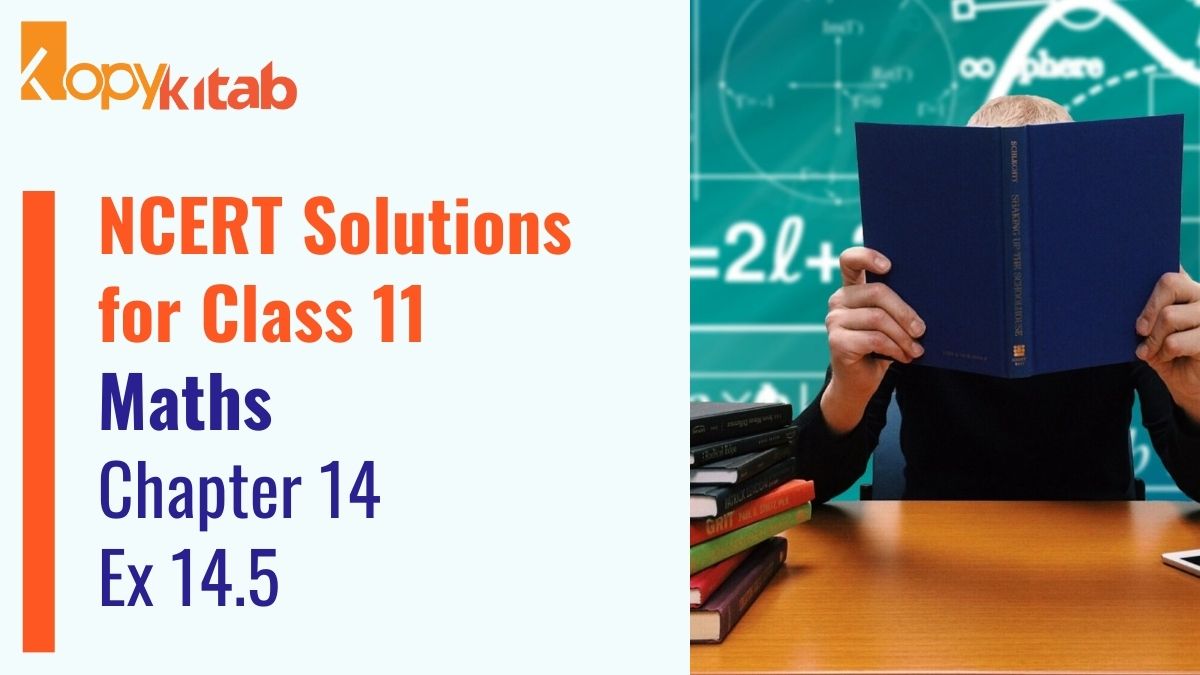
NCERT Solutions for Class 11 Maths Chapter 14 Ex 14.5: The NCERT Solutions for Class 11 Maths Chapter 14 Ex 14.5 prepared by expert Mathematics teacher as per CBSE (NCERT) books guidelines. Download our Class 11 Maths Chapter 14 Mathematical Reasoning Ex 14.5 questions with solutions to help you to revise complete syllabus and score more marks in your exams.
NCERT Solutions For Class 11 Maths Chapter 14 Ex 14.5 Questions with Solutions will help you revise the entire syllabus and get more marks.
Download NCERT Solutions for Class 11 Maths Chapter 14 Ex 14.5 PDF
NCERT Solutions for Class 11 Maths Chapter 14 Ex 14.5
We have provided all the important above in the article regarding the CBSE NCERT Solutions For Class 11 Maths Chapters 14 Ex 14.5. If you have any queries, you can mention them in the comment section.
FAQs on NCERT Solutions For Class 11 Chapter 14 Ex 14.5
Give three examples of sentences that are not statements. Give reasons for the answers.
The three examples of sentences, which are not statements, are as follows. (i) He is a doctor. It is not evident from the sentence as to whom ‘he’ is referred to. Therefore, it is not a statement. (ii) Geometry is difficult. This is not a statement because for some people, geometry can be easy and for some others, it can be difficult. (iii) Where is she going? This is a question, which also contains ‘she’, and it is not evident as to who ‘she’ is. Hence, it is not a statement.
Find the component statements of the following compound statements and check whether they are true or false: Number 3 is prime or it is odd.
The component statements are as follows. p: Number 3 is prime. q: Number 3 is odd. Both the statements are true.
Identify the quantifier in the following statement and write the negation of the statements. There exists a number which is equal to its square.
The quantifier is “There exists”. The negation of this statement is as follows. There does not exist a number which is equal to its square.
Show that the statement “For any real numbers a and b, a2 = b2 implies that a = b” is not true by giving a counter-example.
The given statement can be written in the form of “if-then” as follows. If a and b are real numbers such that a2 = b2, then a = b. Let p: a and b are real numbers such that a2 = b2. q: a = b The given statement has to be proved false. For this purpose, it has to be proved that if p, then ∼q. To show this, two real numbers, a and b, with a2 = b2 are required such that a ≠ b. Let a = 1 and b = –1 a2 = (1)2 = 1 and b2 = (– 1)2 = 1 ∴ a2 = b2 However, a ≠ b Thus, it can be concluded that the given statement is false.
